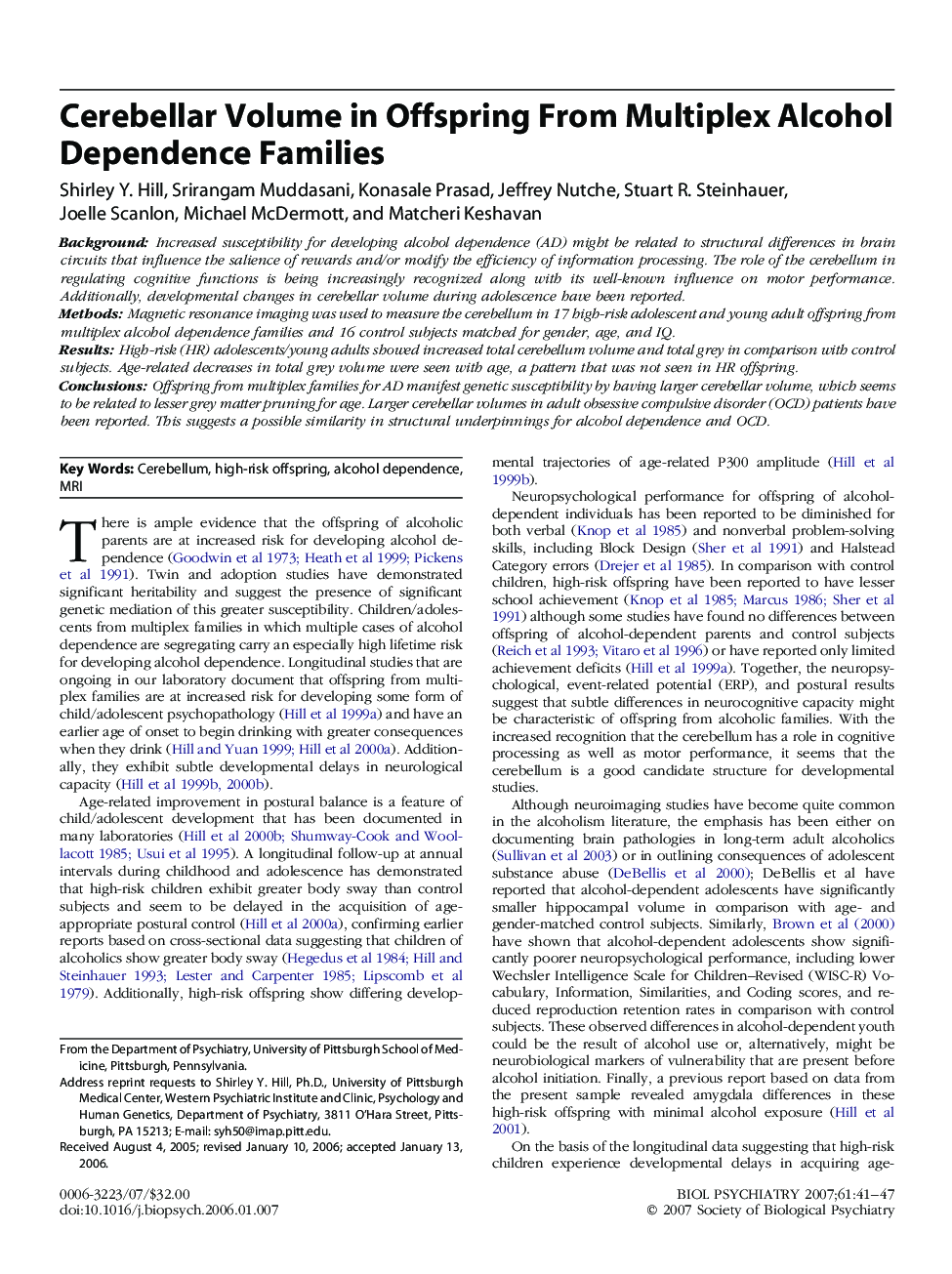| Article ID | Journal | Published Year | Pages | File Type |
|---|---|---|---|---|
| 4179845 | Biological Psychiatry | 2007 | 7 Pages |
BackgroundIncreased susceptibility for developing alcohol dependence (AD) might be related to structural differences in brain circuits that influence the salience of rewards and/or modify the efficiency of information processing. The role of the cerebellum in regulating cognitive functions is being increasingly recognized along with its well-known influence on motor performance. Additionally, developmental changes in cerebellar volume during adolescence have been reported.MethodsMagnetic resonance imaging was used to measure the cerebellum in 17 high-risk adolescent and young adult offspring from multiplex alcohol dependence families and 16 control subjects matched for gender, age, and IQ.ResultsHigh-risk (HR) adolescents/young adults showed increased total cerebellum volume and total grey in comparison with control subjects. Age-related decreases in total grey volume were seen with age, a pattern that was not seen in HR offspring.ConclusionsOffspring from multiplex families for AD manifest genetic susceptibility by having larger cerebellar volume, which seems to be related to lesser grey matter pruning for age. Larger cerebellar volumes in adult obsessive compulsive disorder (OCD) patients have been reported. This suggests a possible similarity in structural underpinnings for alcohol dependence and OCD.
